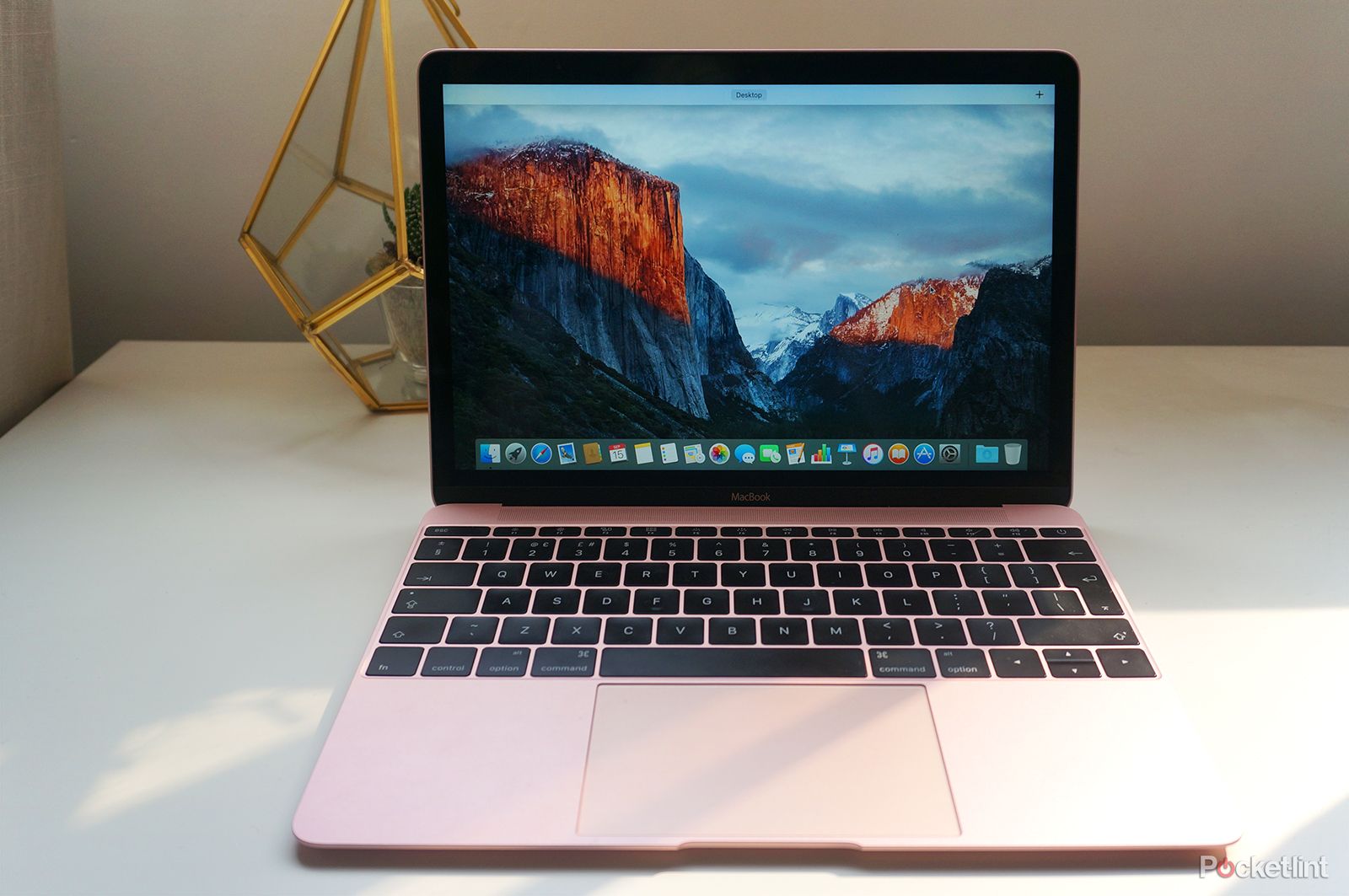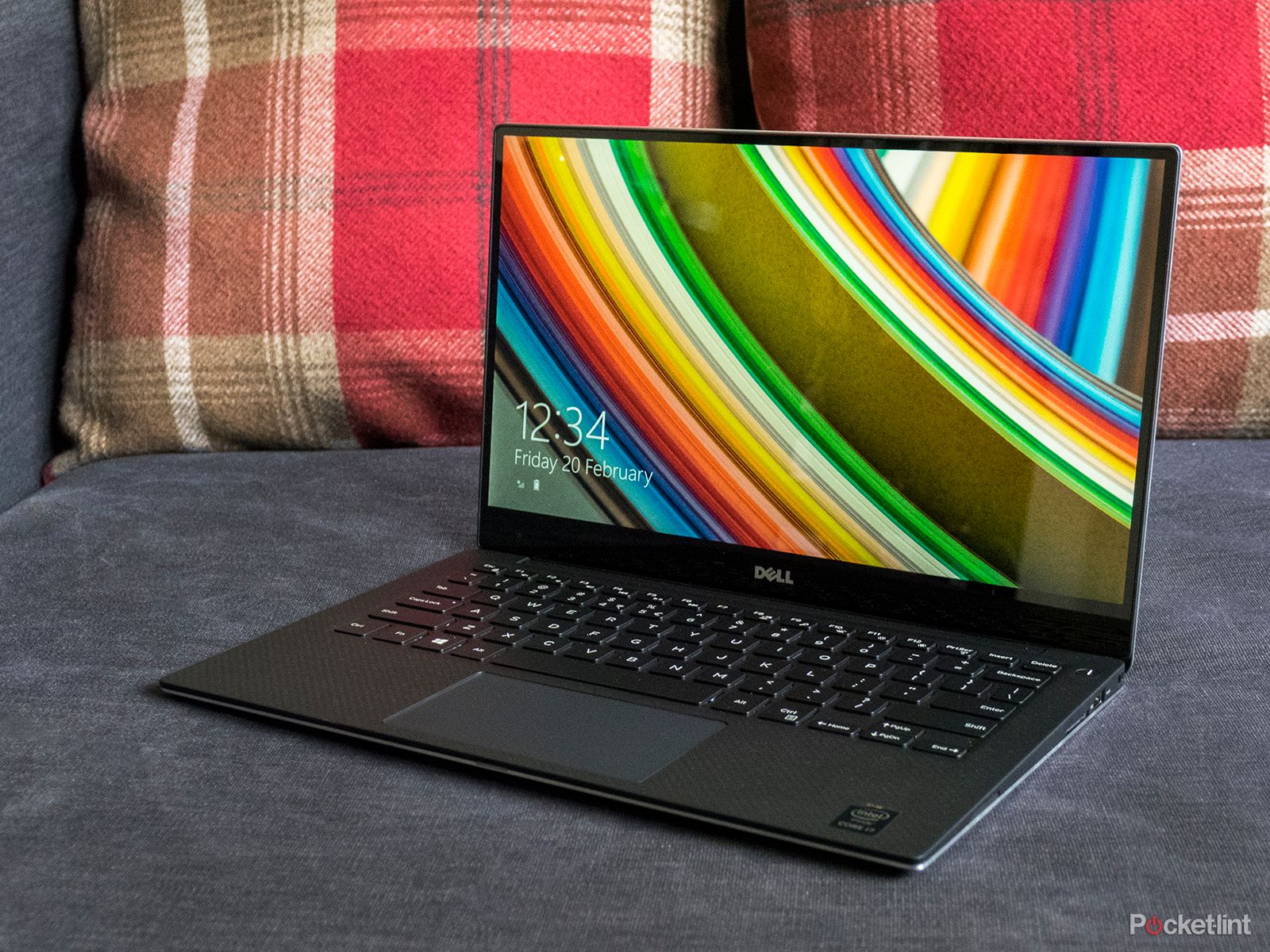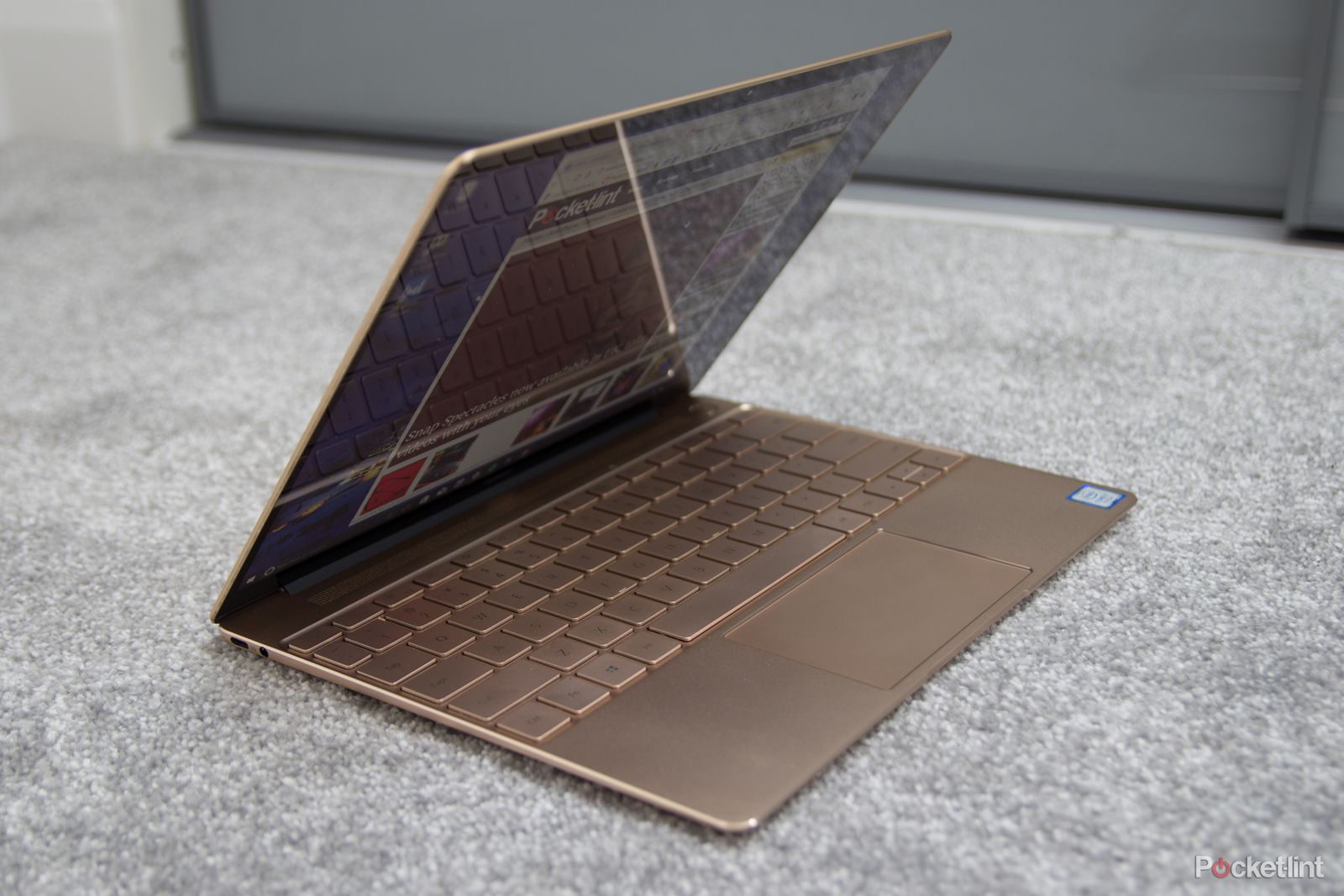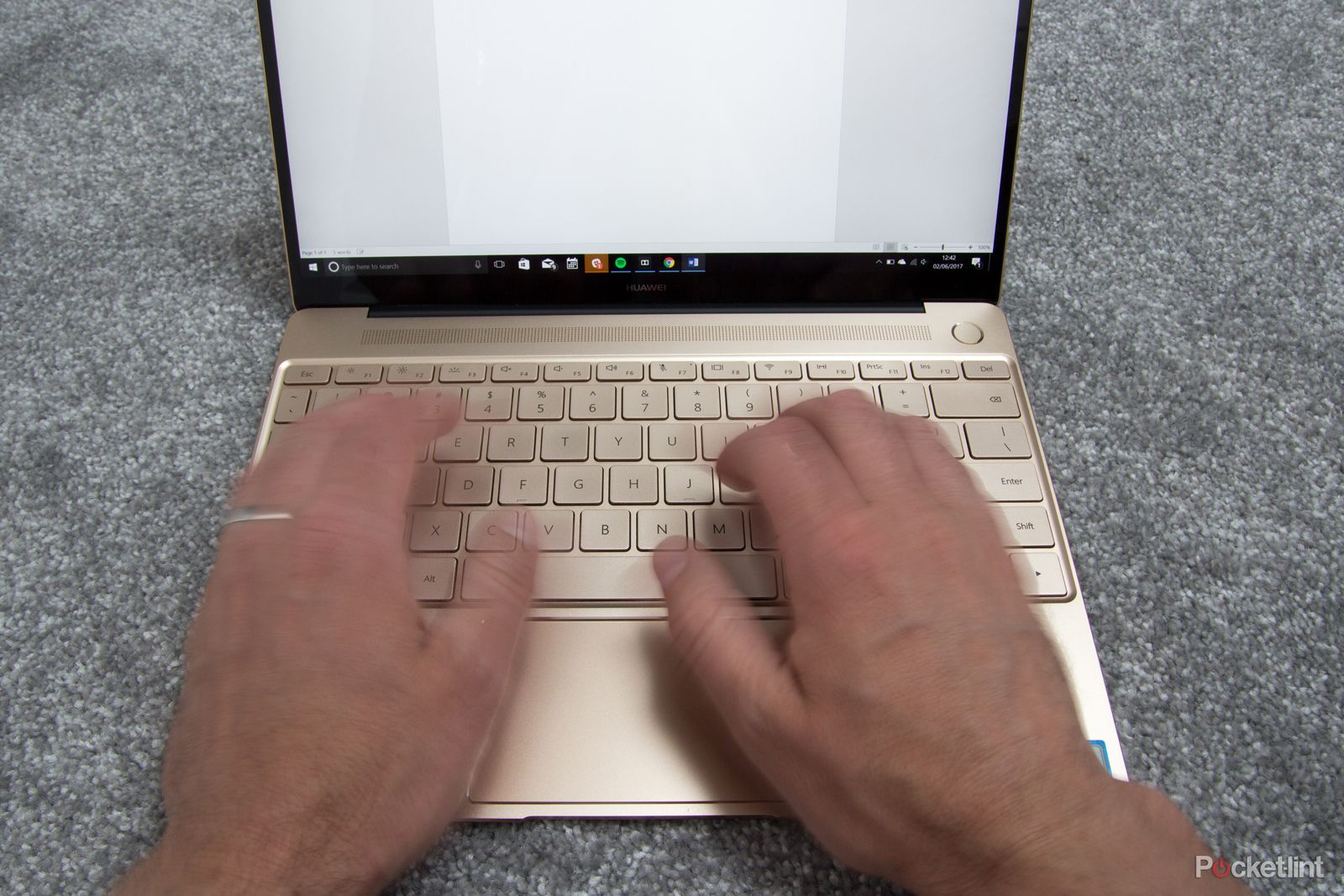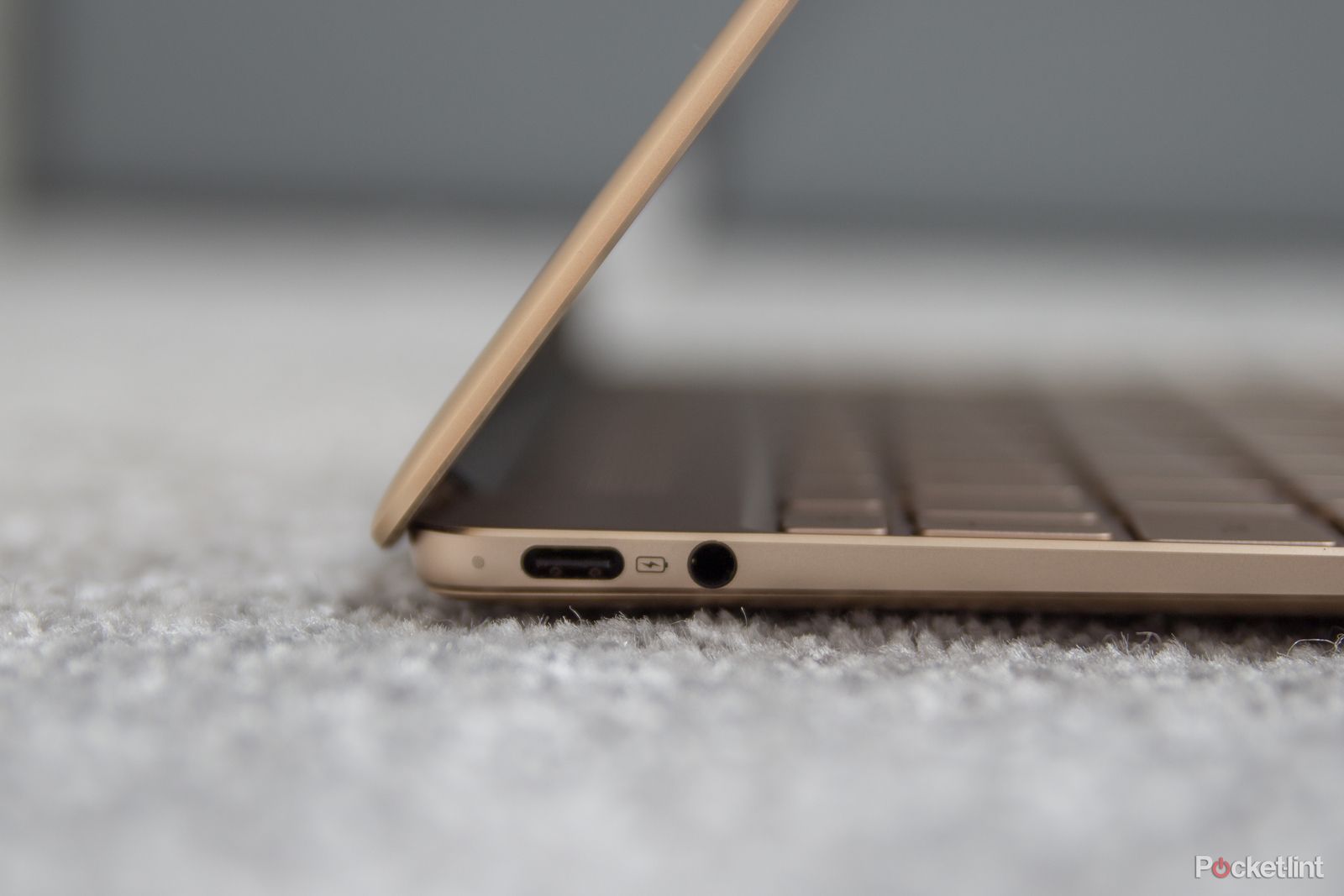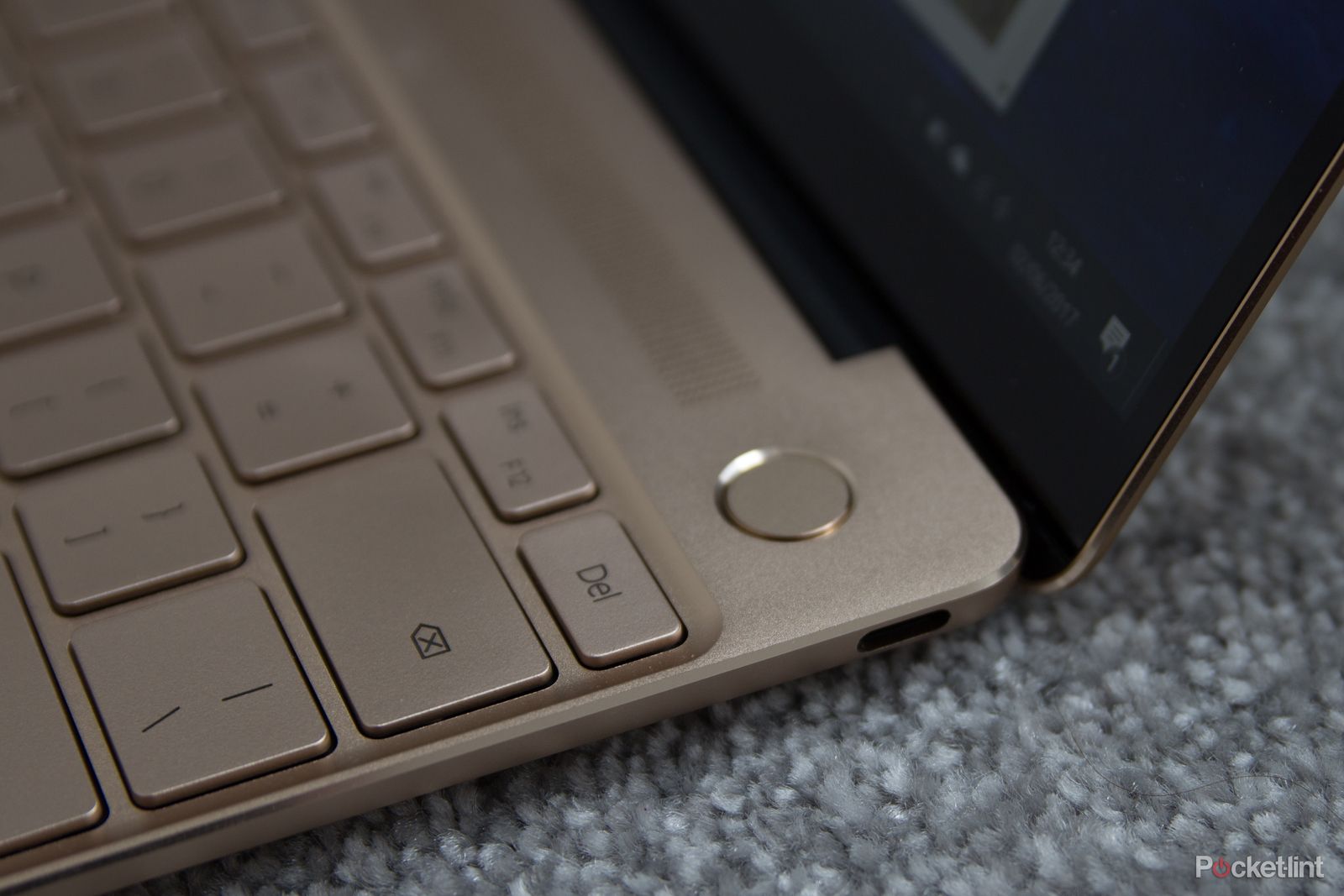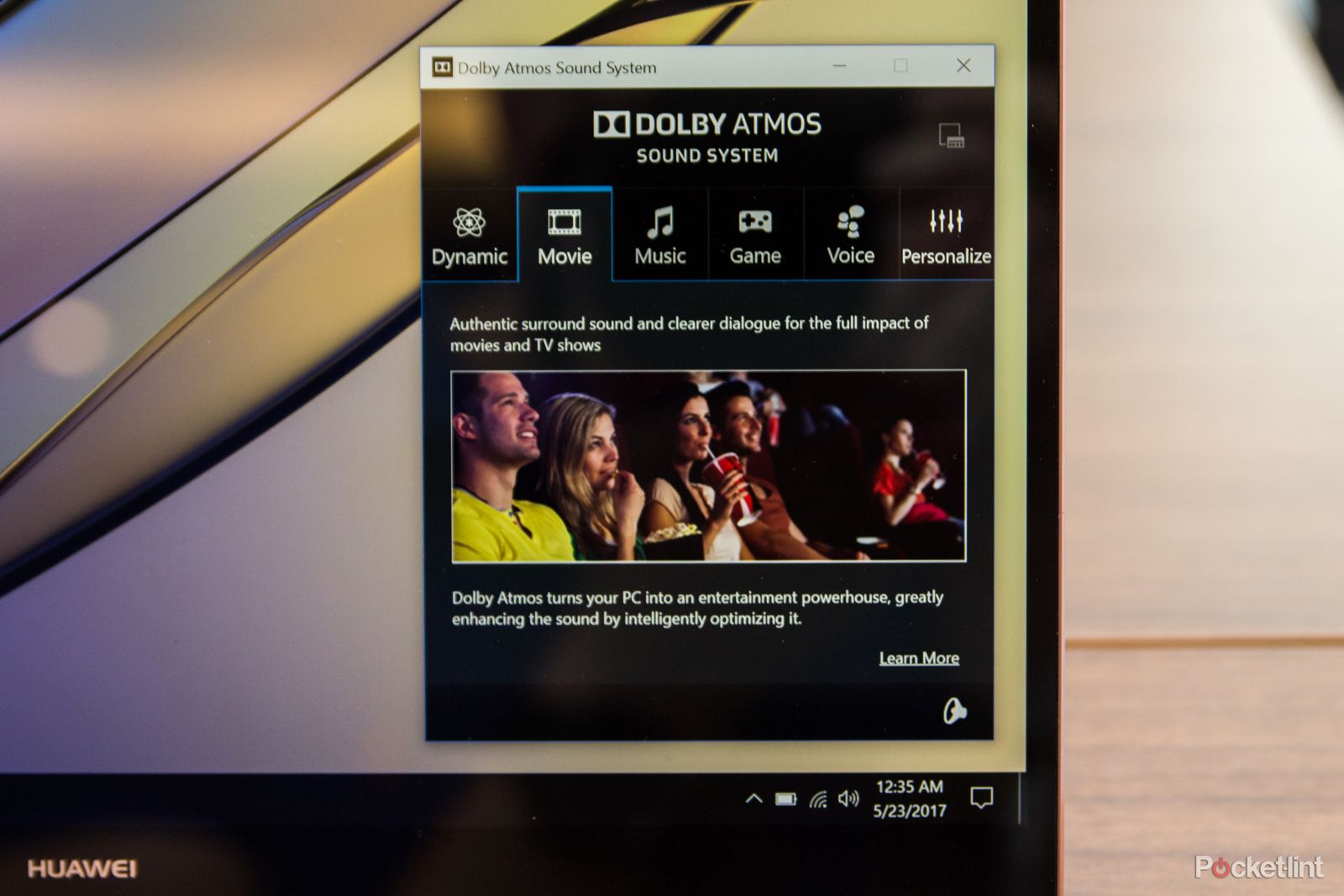Huawei is an ambitious company. It's been tearing its way through smartphones, looking to move itself from budget brand to a mainstream premium player with its P-series devices. And it's been doing a pretty good job, too.
Our quick take
The real winner in the MateBook X is its design. This laptop fires itself right into the centre of the Ultrabook pack, likely to cause the go-to MacBook and Dell XPS some disruption thanks to its slim and light design, very usable keyboard and trackpad, plenty of power from Intel Core i processors and silent operation.
There's also a great display as standard with minimal bezel that looks great. While Dell offers much the same - and arguably better battery life and a touchscreen in the XPS 13 - the MateBook X does have the X factor: it's a laptop we want to use.
The only hurdles are few and far between: photographers will be annoyed by the lack of SD card slot, and then there's the price, which is likely to be higher than its rivals. We're still waiting for confirmation of exactly how much this will cost in pounds and pence, though.
Overall, the MateBook X is a compelling option and a wonderful debut from a company that you won't associate with laptops just yet - but will in the future, if this is anything to go by.
Bravo Huawei, the MateBook X is great.
Alternatives to consider
Apple MacBook
- from £1,049
The original ultra-slim and almost port-free laptop, if you're a Mac OS fan then it's the only option. But the MateBook X offers a compelling Windows rival with more power and features.
Read the full article: Apple MacBook 2016 review
Dell XPS 13
- from £1,049
If battery life and standard connectivity (like an SD slot) is a real clincher for you then the equally powerful Dell XPS 13 is the way to go. It might not be as good-looking as the MateBook X, but it'll last longer.
Read the full article: Dell XPS 13 (2015) review
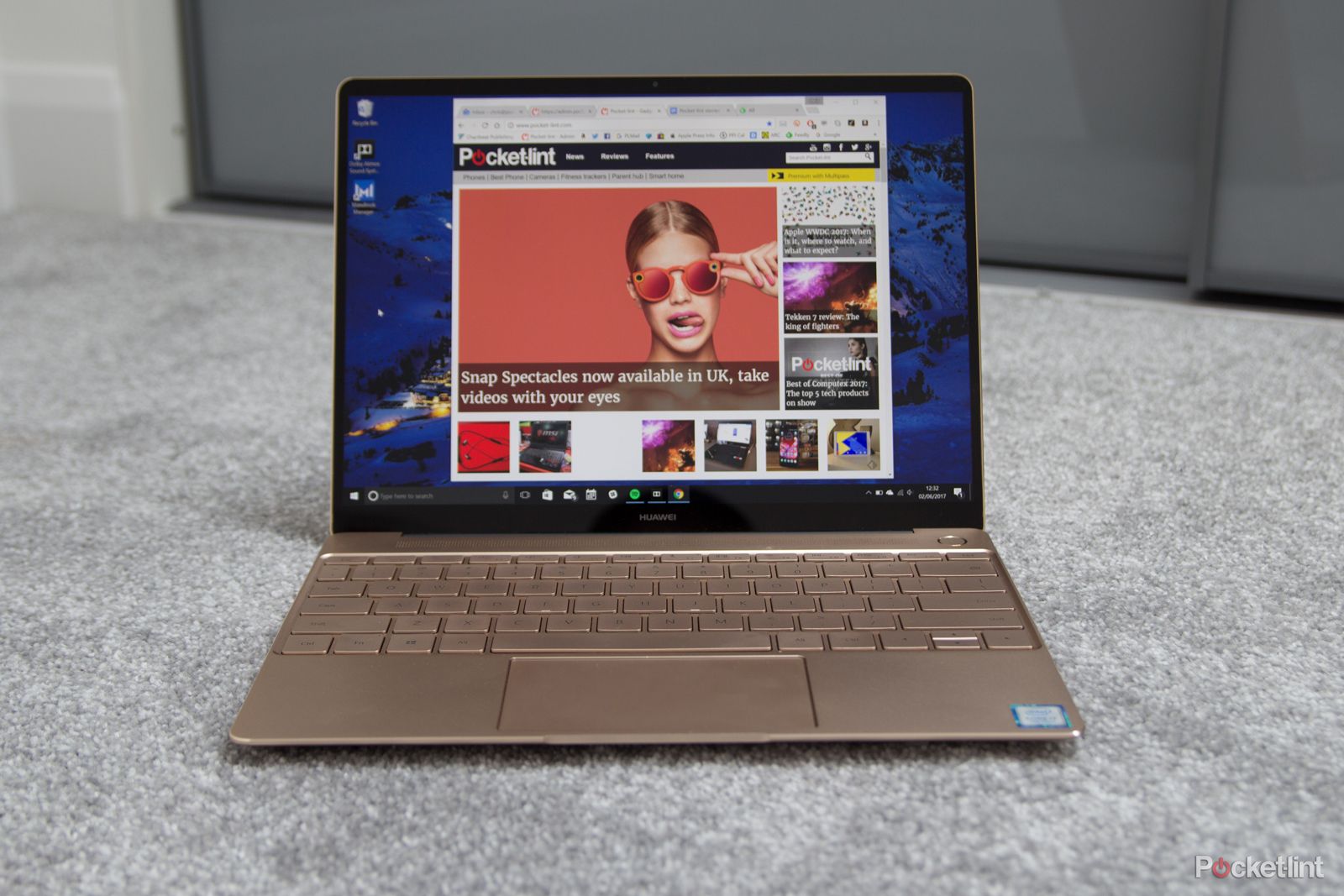
Huawei MateBook X - 4.5 / 5
| FOR | AGAINST |
|---|---|
|
|
Huawei MateBook X
While Android phones are why Huawei is best known in the consumer sector, the company is a telecommunications powerhouse, underpinning the infrastructure of many 4G networks, as well as being a white label manufacturer for a lot of set-top boxes and connected dongles.
With such expertise it's little surprise that the Huawei brand is expanding into laptops. While the company's first tablet, the MateBook, wasn't the best attempt, it's first Ultrabook, the MateBook X, is much better. Be warned Dell and Apple - because Huawei is coming for your customers with a MacBook beater of its own.
Huawei Mate X review: Design
- 286 x 211 x 12.5mm; 1.05kg
- Premium metal designs in gold, rose gold, grey
The MateBook X is all about portable, lightweight design. As Huawei boasts, the X is slimmer than the 12-inch MacBook and it adopts premium techniques that you'll find on Huawei's phones, like the diamond cut precise chamfer to the very edge of the display. It's not a total Apple-a-like, though, as this finish has a hint of Asus ZenBook 3 about it.
The MateBook X is a 13-inch device - although it doesn't look like it. With bezels around the display measuring a mere 4.2mm, there's only a hint at a black border, with the metal of the lid framing the edges neatly. What this means is a lot of display in not a lot of space: the MateBook X is light enough to tote around, without leaving you with a display that isn't really big enough to work on all day.
The other big point of note is the MateBook X's fanless design - and we're talking fanless Intel Core i processor, not less-powerful Core m. Huawei announced this with some fanfare at the launch of this device, but as there's now a new fanless Surface Pro that offers similar hardware, it's not the unique proposition it once was and likely to be commonplace in the future.
This processor choice no doubt aids the skinny build, but also means the MateBook X is a quiet runner. However, as the design has cooling section in the chassis, used to trap heat and draw it away from hardware, the downside is that the base heats up when under load. When working in 26 degree ambient temperatures on a balmy day, you'll start to feel that heat in your lap.
The MateBook X's parallels with the MacBook can't be ignored, from the styling of the rubber feet on the bottom to the look of the keyboard and the trackpad. Not that it's a negative, because the design is rather good. We've been carrying one around for a couple of weeks, and have found the size, lightness and the compact power pack all appeal. The footprint itself is smaller than a piece of A4 paper, so slipping it into any bag is a breeze.
For the most part the MateBook X feels solid too. We like the cool touch of the metal and the matching keyboard colour is nicely done, but there's a surprisingly spongey section of the speaker grille above the keyboard. The keyboard action doesn't seem to be affected, however, and we were happy to clatter out words, with good travel from those chiclet keys. This is a fast keyboard and despite some flex in the deck to the top, that doesn't affect the real-world usage.
The keyboard is backlit and the illumination can be adjusted, but we've found it's not the best backlighting in a laptop: from a lap position we've found the illumination almost totally vanishes when looking from a given angle. This all depends on viewpoint, but we did find ourselves leaning in a little in darker conditions on occasion to ensure we were about to hit the right key.
The touchpad is large and clicky and feels natural to use, but this is one area where the MacBook perhaps does a little better, as the Huawei isn't as smooth and precise as you'll get from Apple. It's still very usable and we like that it's free from the clutter of a fingerprint sensors (which is cleverly placed within the power button).
When it comes to connectivity, the MateBook X also adopts some of Apple's approach, although there's two USB Type-C connections rather than just one, plus a 3.5mm headphone socket. The left-hand socket is for power and you're prompted to switch devices around if you plug them into the wrong place.
Such connectivity is a fusion of conventionality with the adoption of new standards, but there's also a dock/dongle that comes in the box. This will expand connections to USB, HDMI and VGA, so it's more of a desk dock than on-the-go connector for your other devices. The only thing we're left smarting about is the lack of an SD card slot. In regard to connections, therefore, the skinny MateBook X loses out to the Dell XPS 13 which is all the more conventional.
Huawei MateBook X review: Hardware and display
- 13-inch IPS, 2160 x 1440 pixels, 200ppi, 350 nits
- Intel Core i5-7200U or Core i7-7500U; 4/8GB DDR3 RAM
- 256/512GB SSD
- Bluetooth 4.1, Wi-Fi 2x2 MiMo
To the meat of the MateBook sandwich: its display is a 13-inch fully laminated touchless panel with a resolution of 2160 x 1440 pixels over its 3:2 aspect ratio. That results in a little more height than some rivals, meaning a little more working space on that document you might be tapping away on, but obviously it's less well suited to wider content like video.
We've already mentioned that we love the narrow bezels, with Huawei taking a similar approach to the Dell XPS 13's infinity display. There's no touch, however, which is where Dell might be seen to offer a little more on its top-end models. Whether this is a problem or not depends on what you're using at the moment. If you've become a touch and type person, it's a bane, if you're moving from a MacBook, it's no problem at all.
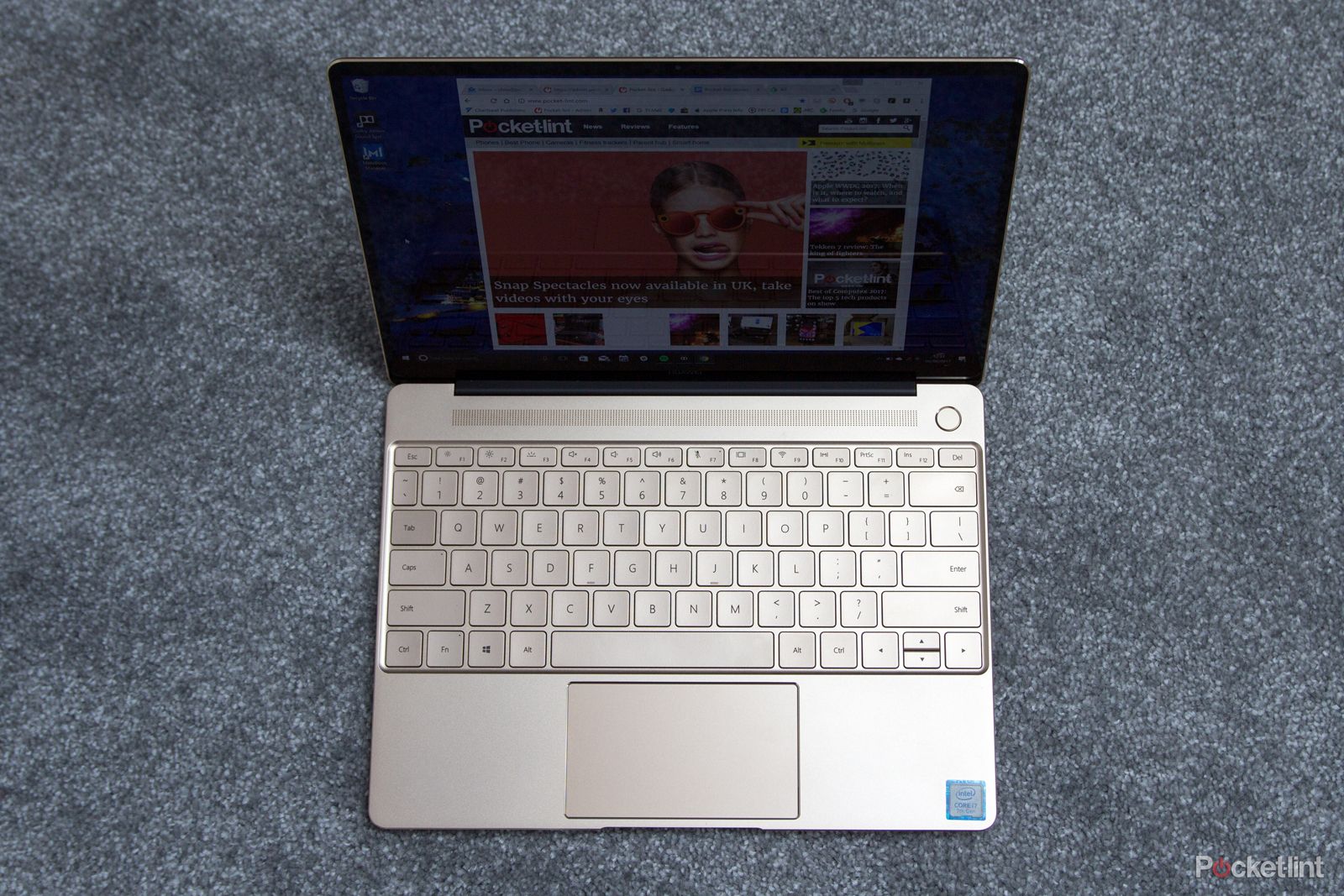
There's ample brightness from the MateBook X's display, although the auto-brightness is a little odd, sometimes limiting the range it will offer based on the ambient conditions (a trait exhibited by Huawei's phones). To get access to the absolute brightest conditions you'll need to switch this off, rather than just using the keys to turn it all the way up. However, using the MateBook X out in sunny conditions and we've had no problems: it's bright enough to cut through the glare when working next to the window on the train and so on. On top of that, it's rich with colour and detail, so content looks good.
Like many skinny ultra-portables there's the choice of i7-7500U or i5-7200U processors, with integrated Intel HD Graphics 620. We've been using the i7 version and have found it to be plenty powerful, but the load-out you choose will make quite a difference to the price.
Our review unit is loaded with the high-end processor, 8GB RAM and 512GB storage - so it's very much the top of the range and rather pricey as a result. It matches the top tier Dell XPS 13 in this regard. At the moment Huawei hasn't confirmed what other/regional configurations will be available or how much more they will cost. For those watching the specs there's been no mention of 16GB RAM that the new Surface Pro will offer at the top end.
The MateBook X also houses a fingerprint scanner, placed within the power button, meaning you can trigger Windows Hello pretty much instantly. It's as good an implementation as we've seen from Huawei on its smartphones, meaning fast unlocking that feels natural to use. It's a really great fingerprint scanner that's been put in absolutely the right place.
Huawei MateBook X review: Battery life
- 41.4Wh battery
- 8.5 hours of real world usage
For portability purposes, battery life is key. It's also the downfall of some slimmer machines as the physical battery size is limited. Huawei claims 10 hours of video playback from the MateBook X, which we think is ambitious.
In real-world use, we've found the MateBook X averages around eight and a half hours of use, for average browser-based working on office tasks. We've seen it drop a little lower to under seven hours when this was slightly more intense - and that's a pretty good, showing that it's a laptop that can suit most use cases, rather than dying in minutes when the processor is called upon for beefier tasks.
The upside is USB C charging, which takes about three hours to pump the MateBook X back up to full power. So while the MateBook X might not be the best battery performer - and, again, the MacBook or Dell XPS will deliver a more reliable 10 hours - we've seen worse and the MateBook X doesn't ring huge alarm bells.
Huawei MateBook X review: Unique audio power
- Dolby Atmos Sound System
One of the aces in Huawei's desk is its collaboration with Dolby. The MateBook X is the first laptop to come with a Dolby Atmos Sound System. In the increasingly muddied waters of what Dolby Atmos means (it's now in cinemas, home movie setups, smartphones, tablets and laptops), here it means that you're getting a greater separation and a degree of object placement compared to normal stereo, as long as you have the content to support it.
We've experienced some demo clips and the effect is surprisingly good, so while the definition of what Dolby Atmos means might be changing, it's certainly a boost to the normal flat acoustics you might expect from a skinny laptop. Dolby says this is a result of working with Huawei from early on in the design process: Dolby wasn't handed a laptop carcass and told it make it sound good, the company was able to have an input on hardware and software design to make sure it could get the desired result.
However, the Atmos effect that the MateBook X speakers can create isn't universal and doesn't apply to all content, so you're not always getting the best in that regard, but there's still some impressive performance on offer.
The system also offers a software controller with a number of different modes, so you can easily switch from music to movie, for example, and generally these do lead to optimised performance for different content types. For straight music, which is what we've used the audio for the most, the important thing is that you can get distortion-free music at high volumes from the MateBook X. It struggles with some heavier basslines, of course, but on the whole it's an audio big hitter.
Huawei MateBook X
To recap
Overall, the MateBook X is a compelling option and a wonderful debut from a company that you won't associate with laptops just yet - but will in the future, if this is anything to go by. Bravo Huawei, the MateBook X is great.

